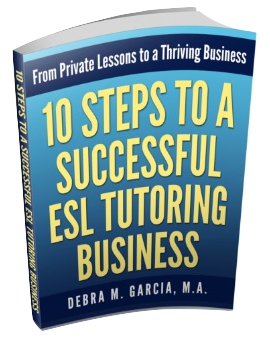Using Tongue Twisters for Pronunciation
"Is using tongue twisters for
pronunciation an effective strategy?"
Can they be used effectively to help ESL and EFL learners improve their pronunciation? And if so, how?
Many native English speakers are not very good with tongue twisters; and I've never been much of a fan of them in general. I was never taught the strategy of using tongue twisters for teaching pronunciation (or at least I don't remember it) during my TESOL training course or other ESOL courses.
But then one day...
A New Teaching Strategy
One of my ESL students, an exceptional young man who is deaf,
told me that a prior English tutor had used tongue twisters during their
lessons to help him improve his English pronunciation. This student
felt that using tongue twisters for pronunciation was an effective
strategy for him. We incorporated them into our lessons together and I
found them to be very effective in improving his consonant and vowel
sounds.
As with any teaching strategy, some work for some students and not for others. I started experimenting with using tongue twisters for pronunciation improvement with some other students.
So far, I have found them to be effective for all of my students! I'm not saying that this will work for everyone, but it is one more teaching tool that I have added to my repertoire.
Tongue Twister Example
Take a look at this popular pronunciation tongue twister.
Betty Botter's Better Batter
Betty Botter had some butter,
"But," she said, "this butter's bitter.
If I bake this bitter butter,
It would make my batter bitter.
But a bit of better butter,
That would make my batter better."
So she bought a bit of butter –
Better than her bitter butter –
And she baked it in her batter;
And the batter was not bitter.
So 'twas better Betty Botter
Bought a bit of better butter.
This famous tongue twister is loaded with potential teaching opportunities. Not only is the obvious "b" sound used here (which can be used to emphasize the minimal pair b/p), but tons of vowel sounds are used, as well.
So if you're looking for new (and fun) ways to teach ESOL students pronunciation, consider using popular tongue twisters.
How to Use Tongue Twisters for Pronunciation
I have private students that I meet one-on-one. I usually send them the text of the tongue twister before our class together. This gives them an opportunity to read it over and become familiar with the text.
During class, I have the student read the tongue twister once or twice aloud. I don't make any corrections at this time. I only note problem areas on my copy of the text. I then point out anything that is particularly off or possibly a new term. In "Betty Botter," most students are not familiar with the contraction " 'twas."
We then spend time line by line with me reading the line and the student repeating the line. We might do one or two lines at a time. It depends on how well the student is pronouncing everything. (It's usually amusing—and probably encouraging—when I mess up on the tongue twister.)
I may also spend more time showing the student how to make particular sounds, as needed. I use a book called Pronunciation Pairs: An Introductory Course for Students of English by Ann Baker and Sharon Goldstein, to work on particular sounds.
This approach can be modified into a lesson plan for the ESL classroom.
Useful as an ESL Assessment Tool
Not only do I find using tongue twisters for pronunciation useful for speaking lessons, but I also find it useful as an assessment tool.
I may chose a specific tongue twister with the lesson plan objective of working on a particular sound (such as "b" in the above example) and discover that we need to do a lot more work on particular vowel sounds.
Experienced ESL/EFL teachers and tutors generally know the problem areas students will have with different sounds before starting the lesson and can have a back-up plan for incorporating these trouble areas in the current lesson or make note of them for future classes.
Related Article
Teaching English Past Tense Pronunciation
- Teaching pronunciation of past tense verbs is a standard concept that
almost all ESL and EFL teachers must teach. This article gives you tips
and strategies for doing so.
From Tongue Twisters for Pronunciation to Teaching ESL to Adults Home


New! Comments
Have your say about what you just read! Leave me a comment in the box below.